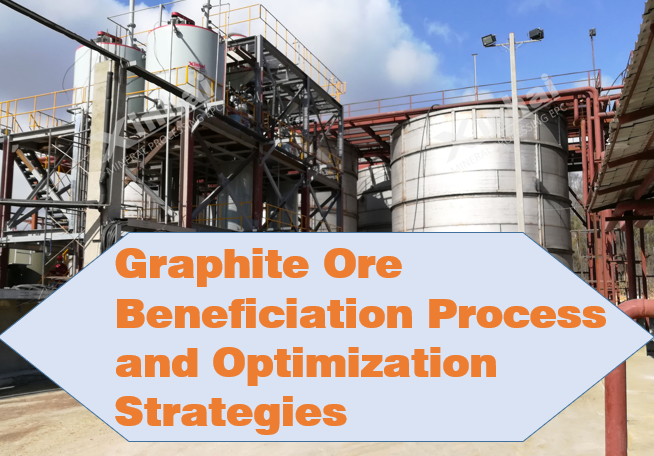Graphite Ore Beneficiation Process and Optimization Strategies
2025-08-05 Xinhai (1076)
2025-08-05 Xinhai (1076)
If you have any questions, please contact us through the following ways, we will give you more and better assistance!

Graphite, a mineral with excellent physical and chemical properties, has irreplaceable applications in numerous fields such as batteries, refractory materials, and lubricants. Natural graphite ores often contain a large amount of impurities and require purification through a series of beneficiation processes to meet the demand for high-purity graphite in industrial production. Graphite ore beneficiation mainly includes three core links: crushing and grinding, flotation, and refining. The technical optimization of each link directly affects the purity, recovery rate, and production efficiency of the final product.
1. Crushing and Grinding: Reducing Scale Loss, Laying the Foundation for Flotation
Crushing and grinding are the pretreatment steps of graphite beneficiation, whose core goal is to crush the ore to a particle size suitable for flotation while minimizing damage to graphite flakes.
· Crushing Stage: Jaw crushers are preferred for primary crushing to handle large-sized ores; cone crushers are used for secondary crushing to further refine particles. The key is to control the equipment speed (jaw crusher speed 300~400r/min) to avoid excessive crushing that causes flake breakage. The crushed ore particle size needs to be sieved to 10~20mm to prepare for subsequent grinding.
· Grinding Stage: Rod mills, characterized by producing fewer fine particles, are suitable for initial grinding to maintain flake integrity. Steel rods with a diameter of 50~100mm are used as media, and the rotation speed is controlled at 60~70r/min. A closed-circuit grinding system (equipped with cyclones) can precisely control the grinding fineness, keeping the overflow particle size below 74μm to prevent over-grinding from affecting flotation efficiency.
Through equipment selection and parameter optimization, the graphite recovery rate of a graphite mine increased from 70% to 85%, and the purity increased from 90% to 95%, significantly improving resource utilization.

2. Flotation Process: Efficiently Separating Impurities, Improving Recovery Indicators
Flotation is the core link of graphite beneficiation, where graphite particles are combined with bubbles and float up by adding flotation reagents to separate from impurities.
· Optimization of Flotation Reagents: Traditional single flotation reagents (such as kerosene and terpineol) have limited effects. New composite flotation reagents (such as mixtures of alkylphenol ethoxylates, alkyl sulfonates, and ethylenediaminetriacetic acid) can increase the recovery rate by 10%~15%, with concentrate purity exceeding 95%.
· Equipment and Parameter Regulation: The stirring speed of the flotation cell needs to be controlled at 1200~1500r/min, and the bubble diameter is optimized to 0.1~0.3mm to improve the attachment efficiency of graphite particles. A multi-stage flotation process (primary flotation to recover coarse particles, secondary flotation to recover fine particles), combined with precise adjustment of the "roughing-cleaning-scavenging" stages, can further improve indicators.
After applying this optimization scheme in a concentrator, the graphite recovery rate increased from 80% to 95%, and the purity increased from 90% to 98%, with annual economic benefits increasing by millions of yuan.
3. Refining Process: Deep Purification to Meet High-End Needs
The refining process combines chemical and physical methods to remove residual impurities and achieve deep purification of graphite, mainly including the following technologies:
· Chemical Leaching: Using 20% hydrochloric acid solution for leaching at 90°C for 4 hours can effectively remove metal impurities such as iron, increasing the purity to 95%;
· High-Temperature Treatment: Heating to above 2500°C in a vacuum or inert atmosphere to volatilize impurities, resulting in a purity of over 99%;
· Acid Washing: Treating with 10% nitric acid solution at 60°C for 2 hours can remove carbonate and silicate impurities, increasing the purity from 85% to 95%;
· Combined Process: The combined process of "acid washing-chemical leaching-high-temperature treatment" can increase the graphite purity to over 99.99%, meeting the needs of high-end industrial fields.
Through systematic optimization of crushing and grinding, flotation, and refining links, the graphite ore beneficiation process can improve product purity and recovery rate while reducing production costs, providing strong technical support for the efficient utilization of graphite resources.